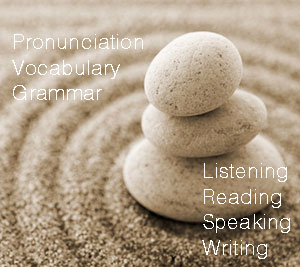Some students don’t believe me when I tell them that Reading is the easiest IELTS module to prepare for. The thing is that Reading seems difficult to them when they take the trial test to measure their level. Usually it turns out that they can’t answer all the questions in one hour, not to mention copying the answers to the Answer sheet.
Still, if a person already has intermediate or upper-intermediate level of English, it is quite possible to boost their Reading score rather quickly. Most students greatly improve their IELTS reading results in two or three months. However, some people need a little more time if they are not used to reading a lot or if their vocabulary is not well-developed.
Key strategies for IELTS Reading
Different teachers offer different strategies, sometimes contradictory ones. Since the vast majority of my students are preparing for IELTS to get 6.5 or 7, I will focus my article on strategies for band 7.
Questions first
When you open an IELTS Reading booklet, first look at the questions and underline the keywords. Then re-read the first three or four questions, and only then start reading the text. You will need to concentrate on looking for the answers, not just reading for the gist.
Scanning
Some IELTS reading questions will give you nice hints – years, names and numbers. Such details will help you to scan the text and underline all the instances where this information is mentioned. This way you will be able to find a spot where the answer is hidden in the text.
Skimming
Have you ever tried to throw a flat and smooth round pebble into the sea and watch it jump? That’s exactly how your eye focus should move on the text if you are using this strategy. Like scanning, it helps you to figure out where the answer is hidden, the only difference is that you jump from one idea to another one.
Skimming really helps those who can’t read very quickly or who lack time to answer all the questions. Technically speaking, you shouldn’t read all the text in great detail, but you should find all the answers.
Still, I need to mention that if you need 8+, it will be better to read the whole text. If you can read quickly, you will manage.
Look for synonyms and antonyms
IELTS reading is about synonyms and antonyms. Usually a question will be a paraphrase of one or two sentences in the text, with two or three synonymous phrases. Thus, synonyms and antonyms help you to make sure that you found the correct spot in the text using two previous techniques.
Memorize ideas
I use this strategy a lot for matching tasks. Let’s imagine that you have nine headlines and seven paragraphs. First, you underline the keywords in questions. Second, you re-read them twice, trying to remember all the ideas. Next, you read the first text paragraph, and match it with the best headline. When you remember the ideas, you can match the headlines much more quickly than when you need to read them again and again.
Skip hard questions
Sometimes you can come across a really tough question. If you can’t find the answer quickly, you’d better skip that question and move on. It’s better to lose one mark than to lose time and fail to answer ten last questions. In case you have time in the end, you can always get back to such questions.
Copy words carefully
When you have fill-in-the-gaps type of questions, check your spelling. Make sure that you spelt the word exactly like it was in the text, then check grammar (sometimes you can have “Students need to fulfil all the requirements” in the text and “A student needs to follow the rules” in the question – in that case you need to coordinate the predicate with the subject and add -s ending).
Double-check your answers
After you fill in the Answer Sheet, it would be wise to check your answers. You need to check three things: 1) spelling 2) number of words – if you have “write ONE word” in the task, you need to have one word in your answer 3) numbers of questions. Sometimes it’s easy to confuse the numbers and write several answers in the wrong order.
Your action plan
Now, when you have read about efficient strategies, it’s high time you used them. Here is your possible action plan:
Do one or two Reading tests every week
You will need IELTS official practice materials 1 and 2 and Cambridge IELTS 9, 8, 7, 6. This way you will have plenty of tests to practice. Print out IELTS Reading Answer sheet. Print out reading booklet, take a pencil and monitor your time at a clock.
The best way to distribute your 60 minutes is as follows:
15 minutes Section 1
3 minutes – copy your answers
16 minutes Section 2
3 minutes – copy your answers
17 minutes Section 3
3 minutes – copy your answers
3 minutes – check all the answers
Analyse your mistakes thoroughly
After checking the correct answers it is extremely important to analyse why you made some mistakes. This will help you to feel the logics of IELTS examiners and to understand the pitfalls and traps. Sometimes students complain that logically an answer should be different. Then I explain that IELTS has a “language logic” that is a bit different from formal logic.
Add new collocations to your Vocabulary
If you made some mistakes because of vocabulary, it would be wise to learn such collocations. Make sure to write them in your Vocabulary file and then revise them three times – next week, in two weeks and in one month.
Read a lot every day – The Economist, BBC, The Guardian
When you read something, you develop your reading skills and your vocabulary. It is quite easy to form a habit to read every day one or two articles.
If you follow all the steps and try to apply the strategies, you will be able to improve your IELTS reading score by 1-1.5 points in two-three months.
 Русский
Русский English
English




